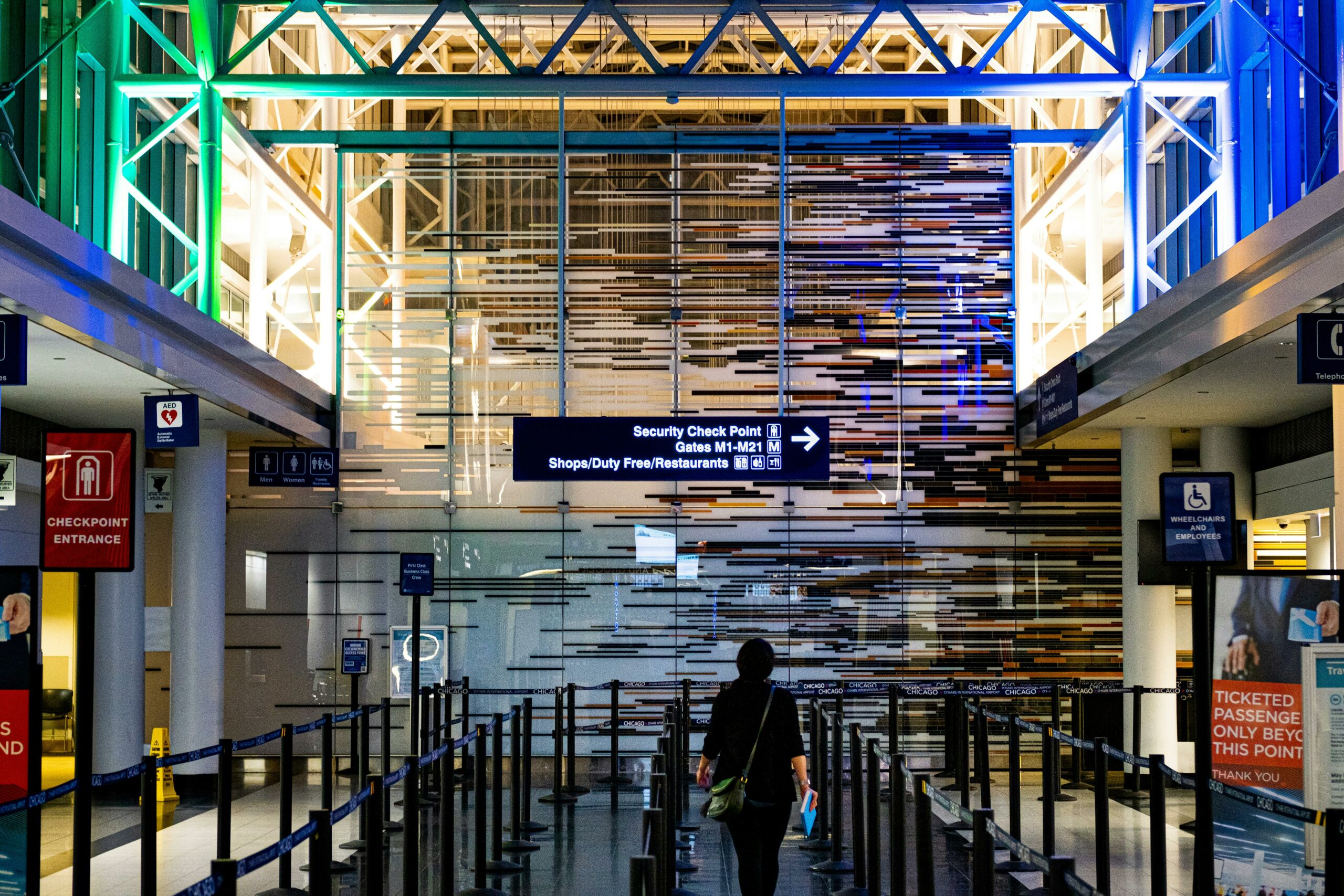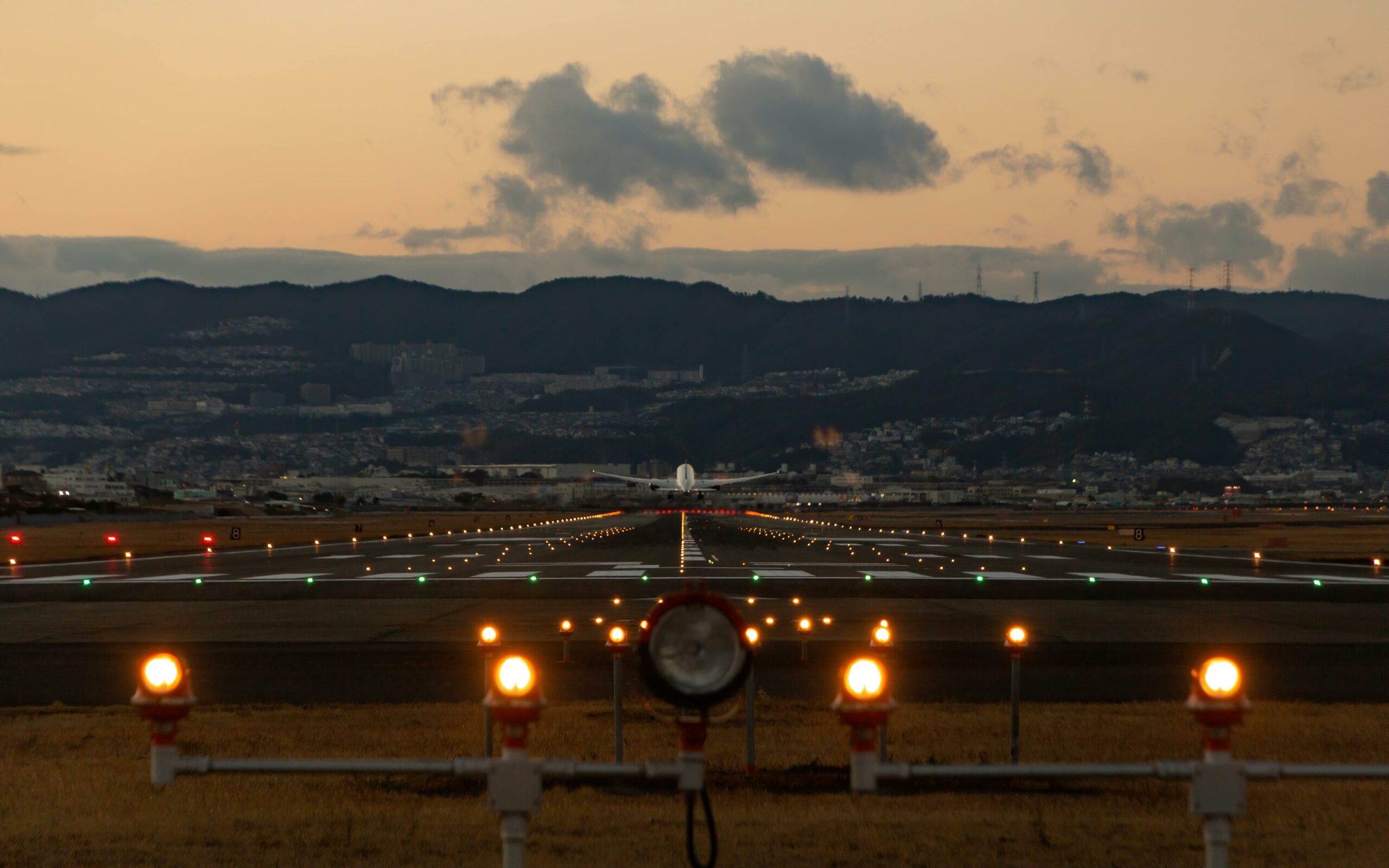7 Tips for Nervous Flyers:
Conquer Your Fear with Ease

Feeling jittery about flying? You’re not alone! This concise guide is packed with practical tips for nervous flyers to help transform your in-flight experience. From understanding the ins and outs of air travel to mastering relaxation techniques, we’ve got you covered. So buckle up and let’s turn your next flight into a smooth and enjoyable journey!
1. Decode the Airplane Noises
Don’t worry, many people experience some degree of nervousness when flying. One way to ease your nerves is by understanding the common sounds you’ll hear during a flight.
When the plane starts moving, you’ll hear the engines powering up. This is normal and a sign that your flight is about to take off. As the plane speeds down the runway, the change in engine power will create a slight rumbling noise. Embrace it, as you’re moments away from being airborne!
Once you’re in the air, you may encounter turbulence. Although it can be unsettling, it’s a common part of flying and is not dangerous. Think of it as bumps on a road. Aircraft are designed to handle turbulence, and pilots are skilled at navigating through it.
During the flight, you may hear a variety of sounds, such as clanks and whirring noises. These can usually be attributed to the normal operation of various airplane systems, including the air conditioning and the hydraulics that control the flaps.
When the plane descends and prepares for landing, you might hear a grinding noise as the landing gear is lowered. Don’t panic; this is simply the mechanism that enables the wheels to extend.
If you’re seated near the wings, you’ll likely hear the engines change pitch during different parts of the flight. Pilots adjust engine power to maintain the desired airspeed and altitude. Again, this is completely normal.
Finally, keep in mind that air traffic control is always in touch with the pilots, providing guidance to ensure a smooth and safe journey. Rest assured, your flight crew are well-trained professionals who are dedicated to making your experience as comfortable as possible.
2. Master Your Pre-Flight Routine
One of the first things you should do is give yourself plenty of time to get to the airport. Arriving early can help to ease any concerns about missing your flight, allowing you to relax and get comfortable with your surroundings.
In the days leading up to your flight, make sure to eat well, get plenty of sleep, and find time for relaxation. Physical activities and self-care activities can reduce stress and help you feel more at ease before your flight. If you’re feeling curious, you can use our turbulence forecast tool to track the turbulence on your flight.
At the airport, find a quiet, comfortable spot to relax and pass the time. Bring along some distractions like a book, music, or a portable game system, and avoid consuming any stimulants like caffeine or energy drinks that may increase your anxiety.
It’s important to familiarize yourself with the flight process and what to expect. Knowing what will happen during takeoff, turbulence, and landing can help to alleviate some of your fears. If you’re a first-time flyer or particularly anxious, consider talking to the flight crew before boarding. They are experienced professionals who can provide reassurance and answer any questions you may have.
Additionally, use calming techniques like deep breathing exercises, visualization, or meditation to keep your nerves in check during your flight. To further increase your comfort, wear comfortable clothing and bring along a pillow or neck support to help you feel more at home during your journey.
3. Arm Yourself with Distractions
As you prepare to take your in-flight journey, remember that distractions can be your best friend when it comes to easing travel nerves. Keeping yourself busy can shift your focus away from your anxieties, making for a more enjoyable travel experience. Here are some suggestions to help you stay entertained during your flight.
First and foremost, arm yourself with some headphones. Noise-canceling headphones can block out the ambient noises that might remind you of your fears while flying. Listen to your favorite music, download interesting podcasts, or immerse yourself in a thrilling audiobook. Don’t forget to pack your headphones in your carry-on bag so you can access them the moment you need them.
In today’s digital age, your tablet or smartphone can become your personal in-flight entertainment system. Make sure to bring your devices fully charged and loaded with movies or TV shows that have captivated your attention in the past. Watching a movie can be just the ticket to transport your mind to another world, leaving behind the anxiety of air travel for a few hours.
If looking at a screen doesn’t appeal to you, consider exploring your creativity by taking travel photos during your flight. When you’re in the air, keep an eye out for interesting shapes, patterns, or views through the plane window. Capturing these moments can help you stay present and engaged in your surroundings, providing a sense of calm and control throughout the journey.
Alternatively, you can use your flight time to catch up on some reading or to work on a personal project, like journaling or completing a crossword puzzle. With so many ways to make productive use of your time in the air, you’ll find yourself landing at your destination before you know it.
4. Practice Relaxation Techniques
As a nervous flyer, incorporating relaxation techniques into your pre-flight routine and during your time onboard can help calm your nerves and make air travel more enjoyable. One of the best ways to ease anxiety is through deep, mindful breathing exercises. Try taking slow, deep breaths, inhaling through your nose and exhaling through your mouth. Focus on your breath and allow it to guide you towards a calmer state of mind.
Another tip for anxious flyers is using a mantra or a phrase that helps to clear the mind and promote relaxation. Repeating this phrase to yourself either out loud or silently can work wonders in calming your nerves. Choose a phrase that resonates with you and helps you feel more at ease during your flight.
Remember that air travel is very common and flight attendants are trained professionals who can help nervous flyers feel more comfortable. Don’t hesitate to ask a flight attendant for assistance or additional information on altitude, seat belt usage, or any other concerns you may have during your trip. They’re there to help and reassure you throughout the entire flight.
Engaging in simple stretches and practicing some chair or office yoga can also be beneficial in managing flight-induced anxiety. While at your seat, try performing gentle stretches and movements to improve circulation and shift your focus away from negative thoughts.
5. Be Mindful of Your Diet
As an anxious flyer, it’s essential to keep your diet in mind before you step onto the plane. Here are some helpful tips to help you feel less nervous during the flight.
Firstly, make sure to eat a balanced meal before you board. A dietary pattern characterized by a high intake of fruit, vegetables, whole grain, fish, olive oil, low-fat dairy and antioxidants, and low intakes of animal foods is linked to a lower risk of depression. A healthy meal prior to your flight can help boost your mood, making you feel less anxious.
Be sure to stay hydrated by drinking enough water before you board and during the flight. Dehydration can cause discomfort, which might aggravate your anxiety. Avoid consuming excessive caffeine and alcohol, as these substances can increase feelings of nervousness.
Next, consider trying mindful eating techniques to help you stay calm during your meal. By focusing on the taste, texture, and sensations of your food, you can keep your mind occupied while you eat, helping to reduce anxiety.
Another tip is to bring along healthy, anxiety-reducing snacks like nuts, fresh fruits, or whole-grain crackers. These nutritious options will help maintain your energy levels and prevent hunger pangs during the flight.
When selecting your seat, consider choosing an aisle seat. This allows you more freedom to stand up, stretch, and walk around, which can help alleviate some of the tension and anxiety you may be feeling. Additionally, you won’t have to inconvenience others if you need to use the restroom or access your carry-on bag.
6. Move Around During the Flight
One of the best tips for nervous flyers is to move around during the flight. Staying in a fixed position for the entire duration of the flight can cause discomfort and increase your anxiety. Moving around will not only help you feel more at ease, but it can also prevent health issues like deep vein thrombosis.
Don’t hesitate to get up and walk down the aisle during the flight. This will not only stretch your legs but also help to combat travel-related stress. Make sure to drink plenty of water and stay hydrated throughout the journey.
It is essential to communicate with your airline before the flight to discuss your needs and what they can do to accommodate you. Airlines often have information and procedures in place for nervous flyers, and they can help ensure your journey is as comfortable as possible.
Don’t forget to engage with your seatmates as well. A friendly conversation can often help to distract you from your anxiety and make the time pass more quickly. Remember that it’s okay to mention your concerns to those around you, as they might offer some tips or reassurance.
In case of an emergency, familiarize yourself with the safety features and emergency exits available on your specific aircraft. Knowing where these are and how to use them in case of need can provide you with a sense of security and control.
7. Leverage the Power of Technology
First, try downloading apps designed specifically for nervous flyers. Various apps on the market offer features such as tracking turbulence, providing relaxing music and meditation exercises, or even offering expert advice from psychologists on how to manage flight anxiety. Having these tools at your disposal can make you feel much more in control and less fearful of turbulence.
Make sure your devices are fully charged and loaded with entertainment to keep your mind occupied during the flight. Download your favorite movies or TV series, save a few interesting travel articles, and create a relaxing playlist. Focusing on something enjoyable can help take your thoughts away from any concerns you might have about the flight itself.
Consider joining online forums or support groups for fellow nervous flyers. Engaging in discussions with people who share your fears can provide encouragement, reassurance, and practical tips. Connecting with others can also remind you that you’re not alone in your flight anxiety, and their travel photos might even provide some inspiration for your own adventures.
Lastly, don’t forget to pack a few gadgets that can contribute to your comfort on the plane. Noise-canceling headphones can be helpful to block out unwanted sounds, while a portable battery pack ensures your phone or tablet won’t run out of juice during the flight.
By exploring these options and leveraging technology, you’re taking proactive steps to address your flight anxiety. Embrace the power of modern gadgets and apps to help you feel more at ease on your next journey. Remember, staying engaged and informed can truly make the flight experience less daunting for nervous flyers like yourself.

